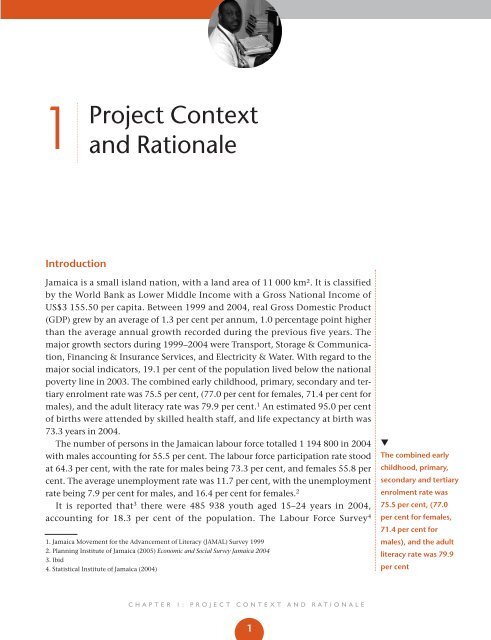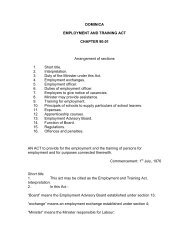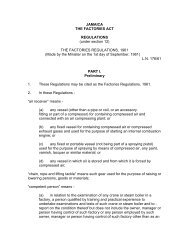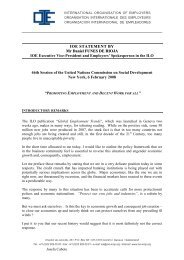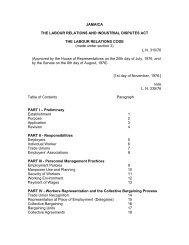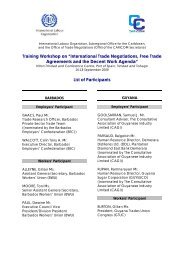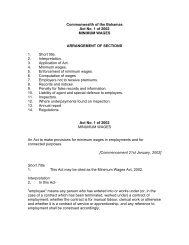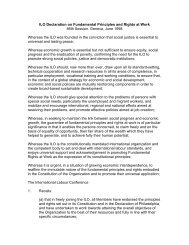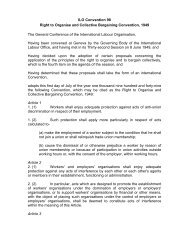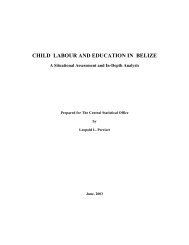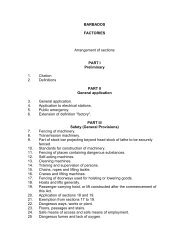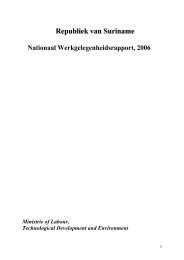The Transition of Jamaican - International Labour Organisation ...
The Transition of Jamaican - International Labour Organisation ...
The Transition of Jamaican - International Labour Organisation ...
You also want an ePaper? Increase the reach of your titles
YUMPU automatically turns print PDFs into web optimized ePapers that Google loves.
1<br />
Project Context<br />
and Rationale<br />
Introduction<br />
Jamaica is a small island nation, with a land area <strong>of</strong> 11 000 km². It is classified<br />
by the World Bank as Lower Middle Income with a Gross National Income <strong>of</strong><br />
US$3 155.50 per capita. Between 1999 and 2004, real Gross Domestic Product<br />
(GDP) grew by an average <strong>of</strong> 1.3 per cent per annum, 1.0 percentage point higher<br />
than the average annual growth recorded during the previous five years. <strong>The</strong><br />
major growth sectors during 1999–2004 were Transport, Storage & Communication,<br />
Financing & Insurance Services, and Electricity & Water. With regard to the<br />
major social indicators, 19.1 per cent <strong>of</strong> the population lived below the national<br />
poverty line in 2003. <strong>The</strong> combined early childhood, primary, secondary and tertiary<br />
enrolment rate was 75.5 per cent, (77.0 per cent for females, 71.4 per cent for<br />
males), and the adult literacy rate was 79.9 per cent. 1 An estimated 95.0 per cent<br />
<strong>of</strong> births were attended by skilled health staff, and life expectancy at birth was<br />
73.3 years in 2004.<br />
<strong>The</strong> number <strong>of</strong> persons in the <strong>Jamaican</strong> labour force totalled 1 194 800 in 2004<br />
with males accounting for 55.5 per cent. <strong>The</strong> labour force participation rate stood<br />
at 64.3 per cent, with the rate for males being 73.3 per cent, and females 55.8 per<br />
cent. <strong>The</strong> average unemployment rate was 11.7 per cent, with the unemployment<br />
rate being 7.9 per cent for males, and 16.4 per cent for females. 2<br />
It is reported that 3 there were 485 938 youth aged 15–24 years in 2004,<br />
accounting for 18.3 per cent <strong>of</strong> the population. <strong>The</strong> <strong>Labour</strong> Force Survey 4<br />
1. Jamaica Movement for the Advancement <strong>of</strong> Literacy (JAMAL) Survey 1999<br />
2. Planning Institute <strong>of</strong> Jamaica (2005) Economic and Social Survey Jamaica 2004<br />
3. Ibid<br />
4. Statistical Institute <strong>of</strong> Jamaica (2004)<br />
<br />
<strong>The</strong> combined early<br />
childhood, primary,<br />
secondary and tertiary<br />
enrolment rate was<br />
75.5 per cent, (77.0<br />
per cent for females,<br />
71.4 per cent for<br />
males), and the adult<br />
literacy rate was 79.9<br />
per cent<br />
CHAPTER 1: PROJECT CONTEXT AND RATIONALE<br />
1


